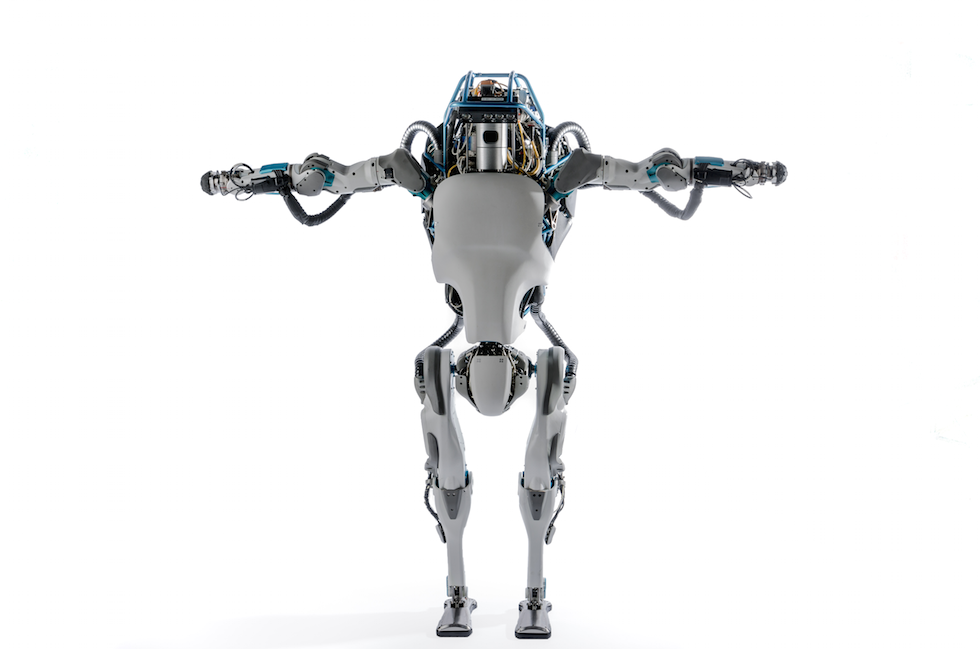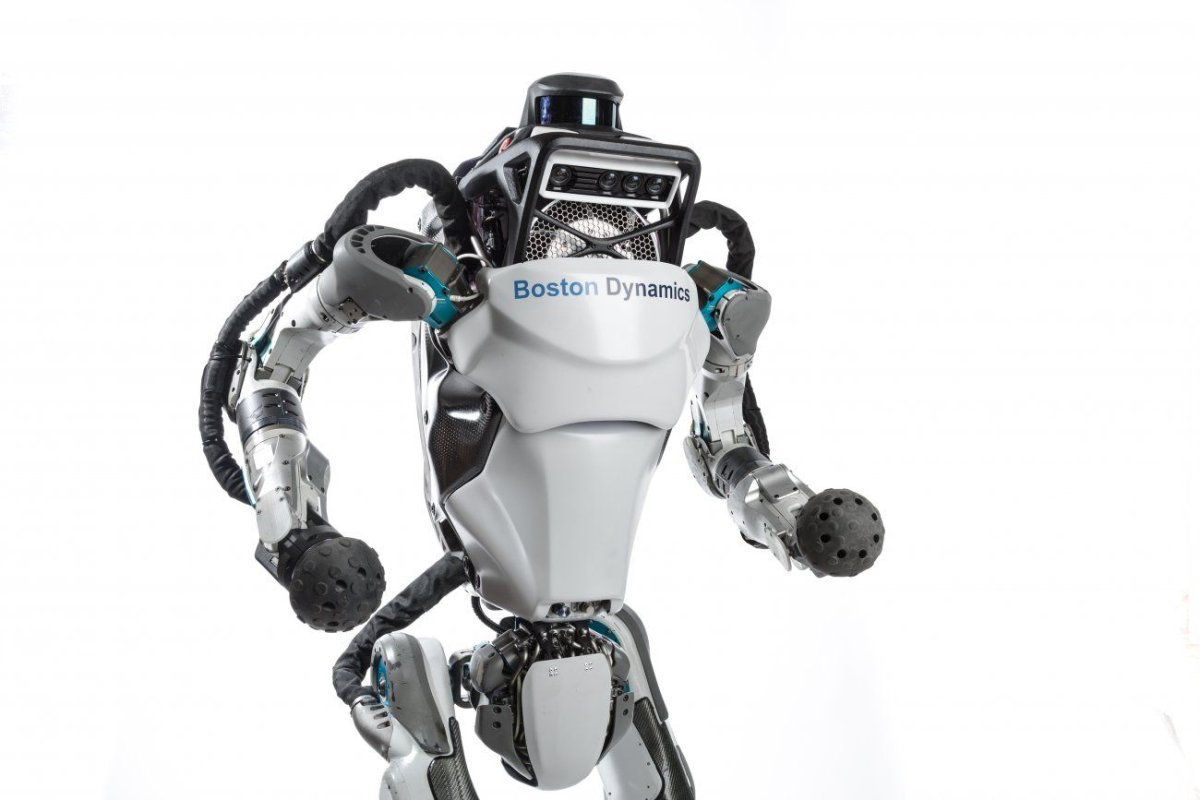
A humanoid robot capable of jumping over blocks and performing backflips has been unveiled by pioneering robotics firm Boston Dynamics.
Each new generation of Boston Dynamics' Atlas robot, originally developed for use in the U.S. military, demonstrates new physical feats of balance and agility.
Previous videos of the 5 foot 9 inches, 180-pound bi-pedal robot have shown its ability to navigate rough terrain, pick up objects and self-right when pushed to the ground.
The latest video, posted late Thursday, shows Atlas performing tricks beyond the realm of most humans, though not every attempt at a backflip is successful.
Boston Dynamics explained the technology behind Atlas in a video published last year, which showed its developers physically tormenting the robot.
"It uses sensors in its body and legs to balance and LiDAR [Light Detection And Ranging] and stereo sensors in its head to avoid obstacles, assess the terrain, help with navigation and manipulate objects," the company explained.
Other robots developed by the company include BigDog, Spot (the robotic dog) and Handle—all of which display unique functionality for use in a range of applications.

Technology firm SoftBank acquired Boston Dynamics earlier this year from Google's parent company Alphabet.
"We at Boston Dynamics are excited to be part of SoftBank's bold vision and its position creating the next technology revolution, and we share SoftBank's belief that advances in technology should be for the benefit of humanity," Marc Raibert, CEO and founder of Boston Dynamics, said at the time.
"We look forward to working with SoftBank in our mission to push the boundaries of what advanced robots can do and to create useful applications in a smarter and more connected world."
It is still not clear what these applications will be, though current humanoid robots in commercial applications are used to perform human tasks, like personal assistants and hotel receptionists.
In the future, advances in humanoid robotics and artificial intelligence could lead to robots like Atlas being used in dangerous environments, such as on space exploration missions.
Artificial intelligence experts warn that such advances will need to be carefully monitored and regulated to prevent future robots from breaking one or all of Isaac Asimov's Three Laws of Robotics.
Last week, hundreds of leading AI figures sent open letters to the prime ministers of Australia and Canada to call for a ban on weaponized robots capable of autonomously deciding whether people live or die.
The letters concluded: If developed, they will permit armed conflict to be fought at a scale greater than ever, and at timescales faster than humans can comprehend. The deadly consequence of this is that machines—not people—will determine who lives and dies."
Uncommon Knowledge
Newsweek is committed to challenging conventional wisdom and finding connections in the search for common ground.
Newsweek is committed to challenging conventional wisdom and finding connections in the search for common ground.
About the writer
Anthony Cuthbertson is a staff writer at Newsweek, based in London.
Anthony's awards include Digital Writer of the Year (Online ... Read more
To read how Newsweek uses AI as a newsroom tool, Click here.








